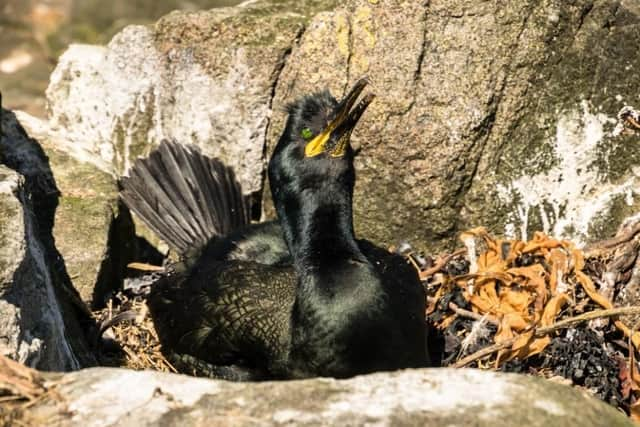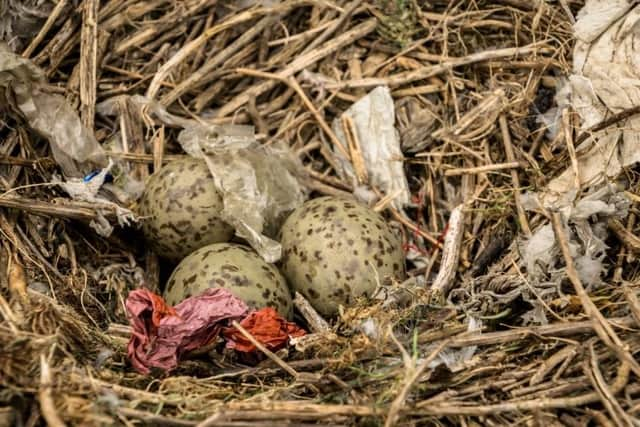Plastic pollution build-up revealed in Scottish seabird nests
Surveys carried out on an uninhabited island off the west coast of Scotland revealed that more than a quarter of all seabird nests contained plastic.
Synthetic debris was found in around one in three nests of gulls on Lady Isle, in the Firth of Clyde.
Advertisement
Hide AdAdvertisement
Hide AdHowever, the figure was much higher for European shags, with up to four out of five affected.


Researchers at the University of Glasgow believe the large difference in the proportion of nests incorporating plastic is likely a result of different nest-building behaviours among species, with rubbish building up over time in nests that are reused each year.
The difference between species may also be explained by the way the debris ends up in the nests.
The plastic has been identified as originating mostly from consumer waste thrown away in villages and towns.
The academics have deduced that this is then transported to nest sites by the sea rather than by the birds themselves.


“They end up in seabird nests not because seabirds actively pick them up in built-up areas and carry them to their nest, but are brought there passively by marine currents.” says Dr Ruedi Nager, a seabird ecologist and senior lecturer at the University of Glasgow.
Danni Thompson, a researcher volunteering with Dr Nager, looked more closely at the herring gull, the most numerous species nesting on Lady Isle.
She said: “As herring gulls often forage in landfills, we wanted to see if they were swallowing plastic whilst eating and then bringing it back to the nest.”
Advertisement
Hide AdAdvertisement
Hide AdFrom photographs of the nests and plastic found in pellets of regurgitated food remains at the nest site, they were able to compare types and colour of ingested plastic and fragments incorporated in nests.
If the likely source of plastic in nests is from debris that birds ingest while foraging in populated areas, then there would be a high similarity between that found in both pellets and nests.
“But the plastic types in their diet were different from those found in the nest, which tells us that the plastic in nests arrived by different means,” said Dr Nager.
The researchers also mapped all nests on the island and tested whether those with plastic were equally distributed across the area.
Results showed that nests on the north of the island, which are closer to the outgoing tide from the mainland, were more likely to contain plastic.
This suggests that the plastic in the nests came originally from the mainland and was washed up on the shoreline, then collected by birds nesting nearby.
Seabird populations are in decline globally, so it is important to understand all the pressures that they face.
They can be harmed by plastic pollution through ingestion, entanglement and nest incorporation.
Advertisement
Hide AdAdvertisement
Hide AdDebris in nests may affect birds in different ways, but has the potential to hamper the survival of eggs and chicks.
Plastic in the nest can also lead to fatal entanglement of adult birds and chicks.
A message from the Editor:
Thank you for reading this story on our website. While I have your attention, I also have an important request to make of you.
With the coronavirus lockdown having a major impact on many of our advertisers - and consequently the revenue we receive - we are more reliant than ever on you taking out a digital subscription.
Subscribe to scotsman.com and enjoy unlimited access to Scottish news and information online and on our app. With a digital subscription, you can read more than 5 articles, see fewer ads, enjoy faster load times, and get access to exclusive newsletters and content. Visit https://www.scotsman.com/subscriptions now to sign up.
Our journalism costs money and we rely on advertising, print and digital revenues to help to support them. By supporting us, we are able to support you in providing trusted, fact-checked content for this website.
Joy Yates
Editorial Director
Comments
Want to join the conversation? Please or to comment on this article.